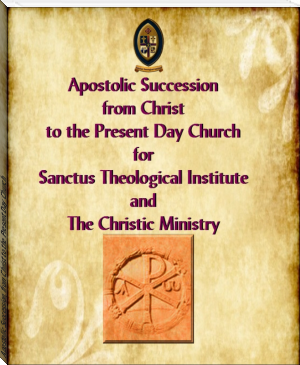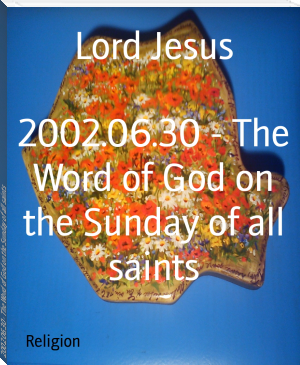Principles of Teaching by Adam S. Bennion (feel good novels .TXT) 📖

- Author: Adam S. Bennion
- Performer: -
Book online «Principles of Teaching by Adam S. Bennion (feel good novels .TXT) 📖». Author Adam S. Bennion
"Out of 139 only 12 reached 75%; 90 received less than 50%; 10 could not name a single book of the Old Testament. Some who did spelled them Salms, Joob, etc. Some named Paul, Babylonians, and Gentiles as Old Testament books."
Surely much might be said in favor of the use of books in our classes.
3. The Special Topic Method. Much can be said both for and against the topic method. At least three objections to its use can be raised:
A. It makes for piece-meal preparation. The lesson is partitioned off into segments, one of which may be prepared by a particular pupil who does not concern himself at all with the rest of the lesson. This method, therefore, encourages fragmentary and incomplete preparation.
B. It makes for a disconnected presentation which makes it quite impossible for pupils to get a unified conception of the whole lesson. This is doubly bad, because of the fact that frequently those who are assigned parts absent themselves from class.
C. It often results in dull, commonplace recitations. All too frequently, especially if topic assignments are the usual method of procedure, those pupils given the various topics to work up content themselves with very meagre preparation. They come to class, therefore, and merely run over so many facts wholly without inspiration and often by constant reference to notes or the text.
Of course, these difficulties can be overcome largely by the judicious use of the topic method. It ought not generally to be followed as the regular order of business, but rather as a supplementary means of enriching the lesson. It ought not to be used so as to excuse all class members from regular preparation of the lesson as a whole. If the teacher will assign the lesson proper to all of the class and then select certain aspects—certain suggested problems—for more intensive research, the reports on special topics can be made to contribute wonderfully to the richness of the class hour. The topic method, then, is primarily a supplemental method, and if wisely used has these advantages:
A. It makes for an enriched lesson. It makes possible expert opinion, and the results of special, careful investigation which the class as a whole would be unable to make.
B. It lends variety to class procedure and guarantees that the teacher will not do all the talking.
C. It fosters individual expression. It trains pupils to formulate an attack, to organize findings, and to stand and deliver a connected and well thought out message.
D. It promotes a habit of investigation—it leads pupils to work out for themselves the problems of the Gospel which they encounter.
4. The Lecture Method. The comment of a student of the Brigham Young University on the lecture method was unique: "The lecture method wouldn't be so bad if a teacher really lectured—he usually just talks. And talking a lot when you haven't much to say is pretty discouraging to a class."
Aimless talking which indulges in the main in vague generalities can never be justified. Preaching presumes a pulpit and has little place in classwork. The teacher who persists in talking most of the time overvalues his own thoughts and minimizes the ideas of others. Much talking stifles initiative and independent thinking. Then, too, it gives no opportunity for developing pupils' power of self-expression and provides no means for the teacher to check the reaction going on in the pupils' minds—assuming that one goes on! It is astonishing what erroneous notions members of a class can get from merely hearing a lesson presented. Given a chance to express their conclusions, they will themselves correct many of their false impressions.
There are occasions, however, when a lecture is extremely valuable. Frequently after several weeks of discussion a class is hungry to hear "the truth about the matter." There is then afforded a splendid opportunity for the teacher to drive home a real message. Then, too, specialists, because of their advanced study on a particular subject, can often present in an hour the results of years of investigation.
Furthermore, in a lecture, the teacher can make an emotional appeal which is practically out of the question in other methods. His enthusiasm and conviction can be made to "carry" his pupils to the contemplation of new truths. Used with discretion, the real lecture is a valuable asset in teaching; indulged in regularly as mere talking or preaching, the method ought certainly to be discouraged.
5. The Discussion Method. This method, built upon questions and their answers, is commendable for its democracy and because of the fact that it stimulates both thought and discussion on the part of most if not all of the pupils. Questions are so vital to good teaching that Chapter XXI will be devoted to their consideration. Suffice it to say here that for all practical purposes it is the basis of the best teaching. Discussions make it possible to reach pupils "Where they are"—make it possible for everyone to contribute of his experience to everyone else.
The one outstanding difficulty with the discussion method lies in the fact that it calls for such skilful direction. It so easily runs off on tangents that the teacher is kept on his mettle holding to the subject in hand.
After all, each method has its advantages and its disadvantages. There are times when any one of them can be profitably used; it is clear that any one of them can be abused—can be made more or less monotonous. Perhaps we can wisely conclude that, "The best method is a variety of methods."
Questions and Suggestions—Chapter XIX
1. Why is it essential that teachers study methods of the recitation?
2. What method do you regularly follow? Why?
3. To what extent is it that a born teacher teaches without method?
4. What is pedagogy?
5. Discuss the relative value of each of the five methods listed in this chapter.
6. Discuss the statement, "The best method is a variety of methods."
Helpful References
Betts, How to Teach Religion; Betts, The Recitation; Earhart, Types of Teaching; Bagley, Classroom Management; Strayer and Norsworthy, How to Teach.
CHAPTER XX REVIEW AND PREVIEWOutline—Chapter XX
The need of review in our Church teaching.—Review a real help to learning in that it makes for: repetition, proper connection, proper evaluation of truth.
An intelligent review is the result only of thorough preparation on the part of the teacher.—Assignment and preparation.—Ability to make assignments a test of good teaching.
Characteristics of a good assignment: It is definite.—It raises a problem.—It connects with the experience of pupils.—It stimulates to action.
General and specific assignments.—When to make assignments.
Each organization within the Church follows regularly its own course of study. At the beginning of the year it sets out upon a prescribed subject subdivided according to the number of meetings scheduled for the year's work. As a result, no one lesson stands out independent of all others, but rather fits in naturally in a sequence of chapters each of which develops some aspects of one big subject. Because of such a plan the matters of review and preview take on vital significance. Each lesson should be made to link up naturally with what has already been presented and should point out by way of anticipation what is to follow. Many educators maintain that the ability to conduct a good review and to make an effective assignment are two of the surest tests of a good teacher.
The problem of review is really one of the most fundamental processes in education. It is the great key to learning. Anyone who has enjoyed the fun of teaching young children how to read has been impressed with the fact that the child has to be led to see and repeat the simplest words over and over again before they are really mastered. It is really astonishing how many times as simple a word as "ran" has to be repeated before the beginner in reading gets it fully into his consciousness. This very difficulty of teaching mere words or letters has led to the abandonment of the old "A-B-C" drill as the first step in reading, and the substitution for it of an indirect method wherein, through the laws of association, groups of words and sentences are mastered as the symbols which express concrete and objectified ideas. But by way of experiment, one of the most impressive experiences open to teachers is to take a child of four or five that has not been taught to read and attempt to drill into its consciousness a group of half a dozen words as simple as these: cat, fan, hat, get, man, jam. To the teacher who has attempted such an experiment no argument is necessary to prove the significance of review and repetition.
Review, then, first of all, is vitally essential because it makes possible impression through repetition which insures the fixing of ideas. Literally, review means to view again. Psychologically it is to repeat the processes of mind which were called into operation the first time the stimulus in question started a mental reaction. The nervous system of man is so constituted that in the acquirement of knowledge, each time the nerve centers react to the same stimulus, the tendency so to react becomes stronger, under the mere presence of the stimulus, starts up an automatic sort of reaction, and we say that the child knows the meaning of the object constituting the stimulus.
Not only is review thus essential in the beginning of the learning process with children, but it remains a vital factor as long as men and women undertake to learn. Review guarantees recall, and recall re-establishes "nerve connections" to the permanent fixing of impressions. Very little of our knowledge remains ours to a purpose unless it is gone over and over until it is thoroughly established. A truth that is taught in a Mutual lesson on a particular Tuesday night, but which is never referred to again, and therefore never recalled, very likely will soon be gone out of consciousness and usefulness. Those truths and facts which are of greatest functioning value to us are those which we continue to run over in our minds and ponder. The reinforcement of review is what establishes our permanent working stock of truth.
Not only is review valuable as a matter of recall, but it makes for an enrichment of mental content which is altogether desirable. The real art of review lies in calling up an old truth in a new setting. Upon second perusal it is seen in skilful review from a slightly different angle so that each recall adds a reinforcement that makes for a clinching of thought which makes it permanent. It very often happens that the first time an idea is called to our attention it means but little, because our mental reaction is limited in the particular field of the presentation; the same idea in a new setting more in keeping with our experience may take on an entirely different significance. That teaching is best, therefore, which presents truth from the greatest number of angles possible, thereby guaranteeing the richest kind of associations in the minds of pupils.
Another value that attaches to the





Comments (0)